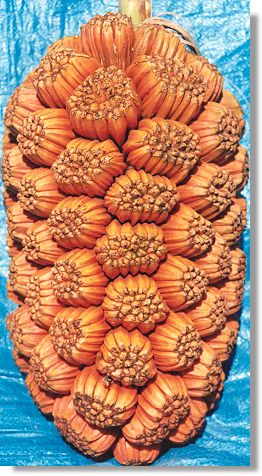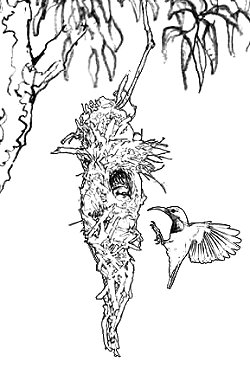Beach Pandanus
 |
Beach Pandanus (Pandanus tectorius) |
Pandanus tectorius
Family: Pandanaceae
The beach pandanus, or screw palm, occurs on foreshores exposed to the prevailing south easterly winds along the Queensland coast, such as Alma and Rocky Bays. They often grow in colonies and mature specimens provide welcome shade at the beach.
On Magnetic Island the beach pandanus grows up to 7 m high and has a pale grey trunk. Aerial prop roots may be present at the base of the trunk. The leaves are sword-like and can be up to 2 m in length, with spines down the edges of the leaf and along the midrib. The leaves are generally crowded at the ends of the branches in spirals hence the name 'screw palm'.
The pandanus has separate male and female flowers on different trees. A large red, 'pineapple-like' fruit that is made up of separate segments follows the inconspicuous flowers.
On Magnetic Island another species of pandanus (Pandanus cookii) is found from the granite foothills to the sandy lowlands and along creek lines. It has sharper spines and often occurs in eucalypt and paperbark woodlands.
The pandanus provides important habitat for many smaller nectar eating and insectivorous birds. The sharp spines act as a barrier to the larger predatory birds. The tiny yellow-bellied sunbird, which forages and socialises in parties, can be seen feeding and playing in the spikey leaves of the pandanus. The helmeted friarbird and the black faced cuckoo shrike both take nectar and insects from the pandanus.
The sunbird builds a tear drop shaped nest with a distinctive hood over the entrance off a loop in a protected place - a tree or verandah usually far away from the feeding and socialising trees. The burning of the 'grass skirt' and the silhouette of the pandanus are local cultural icons

Sunbird & nest
|